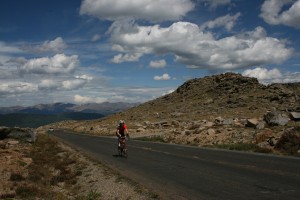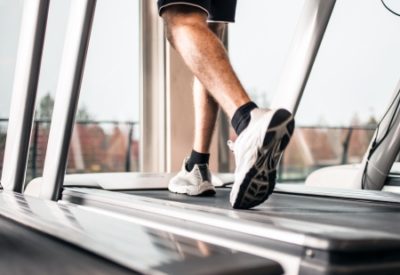
Yves D. emailed me recently: ” Hi. I’m a recent cyclist – started it to lose weight. Lost 30 pounds, but still have a long way to go. 290, 6’3″. I can ride pretty quickly on flats. I train outdoors and indoors and have made good progress in becoming a stronger rider. But HILLS!! At my weight, will I ever get faster on hills or is the physics just unassailable? I can get 16 – 18 mph flat. But a good hill will slam me back to 7 – 9 mph or worse.
Any advice?”
Of course I have advice! On hills the power to weight ratio is critical (why the elites who excel at climbing are often the smaller, lighter cyclists) so one part to improve on hills is to get the weight down. In follow-up communication, Yves does realize that losing weight will in the end help with hill climbing, so we won’t discuss that aspect. Instead let’s talk about increasing the other factor in the equation…power. I would also like to point out that you will go considerably slower on hills than you can on flats, even as a good climber. Speed should only be used as a benchmark for the same hill under similar conditions.
Force Intervals: If you are new to cycling, you want to spend some time getting your legs prepped for handling higher loads. This is essentially specific strength training on the bike. Force intervals are low cadence (~50-60rpm), big gear intervals. Your heart rate may or may not get very high, depending on the length of the interval, but your legs will probably burn. Make sure you are keeping a smooth pedal stroke (push AND pull). These sessions are good in your base phase of training. Duration can be about 1-5 minutes with equal recovery time of easy spinning in between.
Check your Cadence: Another thing to review is your cadence on the hill. If you find that you are usually in a big gear mashing 50rpm trying to ride the the hill like the above-mentioned force intervals (assuming you aren’t on a super-steep hill), you probably need to back off a few gears and increase the cadence. Let the aerobic system do more of the work, because it takes quite a bit of muscular endurance to maintain a fast “big gear mashing” climb for very long. Practice spinning a higher cadence on longer, moderate hills.
Once you’ve done several weeks of force intervals and understand the cadences needed, and you are physically ready for more intensity in your training, the fun begins!
Hill Repeats: One way to get better on hills is to ride them a lot, and I recommend doing this in the form of hill repeats twice a week during a training block that focuses on hills. For example: find a target hill and do a warm-up for about 20 minutes before you get there. Make sure the legs are good and ready to put in a solid effort before starting the hill repeats. For example, you could do 3×5 minutes up the hill at RPE* 8 and then recover for 3-5 minutes. You cadence might depend on the hill, but shoot for 70-85rpm. Be sure to spin the legs out on the descent. If you can’t get out on a hill and need to do this on a trainer, add a climbing block (or two) under your front wheel. Phone books can also work, or some other stable riser for the front wheel. But make sure it is stable! Shift into a big gear to simulate the climbing load. Build each week by adding more time or reducing recovery. These are hard efforts, so make sure you get adequate recovery between them, and don’t do them more than twice a week. Once a week is likely enough if you are new to climbing.
*RPE = rate of perceived exertion on a scale of 1-10.
Get Up and Down: If you are going to be climbing some steep stuff or really long climbs, you can work on in the saddle and out of the saddle work. This changes up the muscles that are used and can help fend off fatigue for a bit. It will also strengthen your legs! Get out of the saddle and ride at 60-70rpm pushing a slightly bigger gear for a few minutes, then sit back down, back off a gear or two and spin at 80-90rpm for a few minutes. repeat – repeat – repeat. You’ll know when your legs have had enough! Try to stand a bit longer each time.
Off the Bike Strength: Keeping the core strong is also key, not only for hill climbing but for general cycling. Body weight exercises, such as squats and lunges, are good to strengthen the hip and legs. The more stability you have in the core and hips, the longer you will be able to maintain good form, and therefore be more efficient on the hills.
Of course, working with a coach who can target your needs and craft workouts specifically for you is ideal, but the above workout suggestions should get you on the right path to scooting up hills like a mountain goat.






